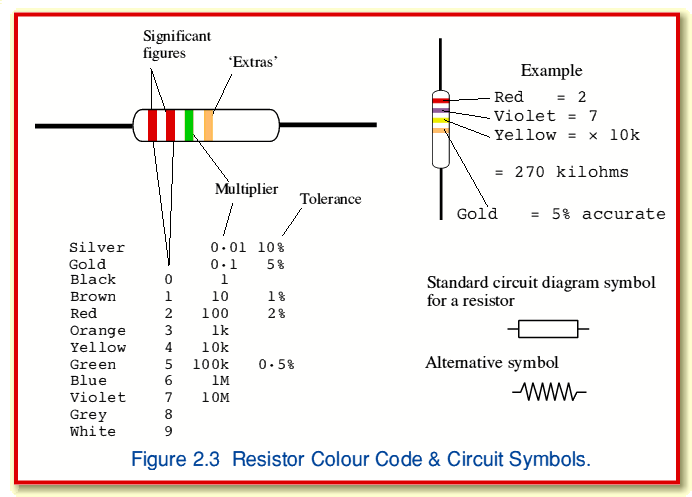A resistor is a two-terminal electrical or electronic component that resists an electric current by producing a voltage drop between its terminals in accordance with Ohm's law: R= V divided by I, The electrical resistance is equal to the voltage drop across the resistor divided by the current through the resistor. Resistors are used as part of electrical networks and electronic circuits.
This is an example of a Resistor:

The second standard is the use of the resistor colour code. Modern resistors can be very small & there might be hundreds of them on a circuit board, pointing in all sorts of directions. Trying to find or read printed values in this situation would something of a nightmare! To avoid this problem, resistors normally display their value as a series of coloured bands or rings. These use colours as indicated in figure 2.3. These are read starting with the band nearest an end. Most resistors have just four bands. The first two give the significant figures. The third gives a power of ten which you multiply the figures by to get the correct resistance. The fourth band (which isn't always there!) gives the tolerance or accuracy of the value. Some resistors have extra bands, but we won't worry about that in this course!

1 comment:
Siguro, for me isa ito sa lesson na pinaka gusto ko.....kasi madali sya!
Post a Comment